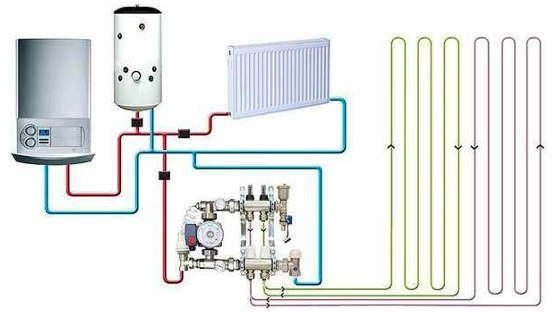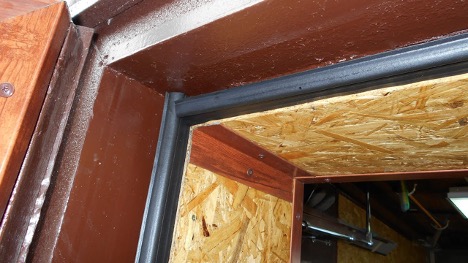Combined heating system for a private house: diagram, how to make it
Creating a combined heating system for a private home is a complex but very effective task. This system combines multiple heat sources, providing reliability and savings. In this article we will look at the intricacies of installing such a system and its implementation.

The content of the article
Basics of a combined heating system
A combined heating system is an effective and flexible solution for heating a private home. This system combines several heat sources, including the following:
- a gas boiler;
- electric heaters;
- solid fuel boilers;
- renewable sources, for example, solar collectors.
The main idea is to take advantage of each source depending on the current needs and operating conditions. This approach allows not only to increase the efficiency of the heating system, but also to significantly reduce energy costs.
When designing a combined heating system for a private home, it is important to consider many parameters. These include the following:
- total area and volume of heated premises;
- thermal insulation characteristics of the building;
- climatic conditions of the region of residence;
- availability and cost of various types of fuel.
The efficiency of the system largely depends on the correct calculation of the power of the heating equipment and the creation of an optimal balance between various heat sources. Ideally, the system should automatically switch between sources, optimizing fuel and energy use based on outside temperatures and heating needs.
When creating a combined heating system for a private home, special attention should be paid to the control system. Modern automatic control systems allow you to adjust the heating operating mode, taking into account weather conditions, time of day and even the presence of people in the house. This not only ensures maximum comfort, but also helps avoid unnecessary heating costs when it is not required. Thus, a combined heating scheme must include both efficient heat distribution and intelligent control of the entire system.
Design principles
When developing a combined heating scheme, it is important to consider many factors: the size of the house, climatic conditions, availability of fuel resources and energy efficiency. The key is to create a system that can flexibly adapt to changes in weather and heating needs.
Important design steps include:
- Assessment of heat loss at home to determine the required power of the heating system.
- Selection of suitable heat sources, their combinations and installation locations.
- Calculation and design of piping and radiator systems to ensure uniform heat distribution.
- Integration of a control system for automatic switching between different heat sources.

Implementation of a heating system
After developing a plan and selecting equipment, the installation stage follows. It is important to ensure high-quality installation of all system elements, including boilers, pipelines, radiators and control systems. This requires careful work and, as a rule, the involvement of qualified specialists.
Conclusion
Creating a combined heating system is the optimal solution for ensuring comfort and savings in a private home. A properly designed and installed system will not only provide comfortable living during the cold season, but will also significantly reduce heating costs by using the most efficient and economical heat sources in various situations. Combined heating of a private home is a modern solution that allows you to create a cozy and warm home at minimal cost.





